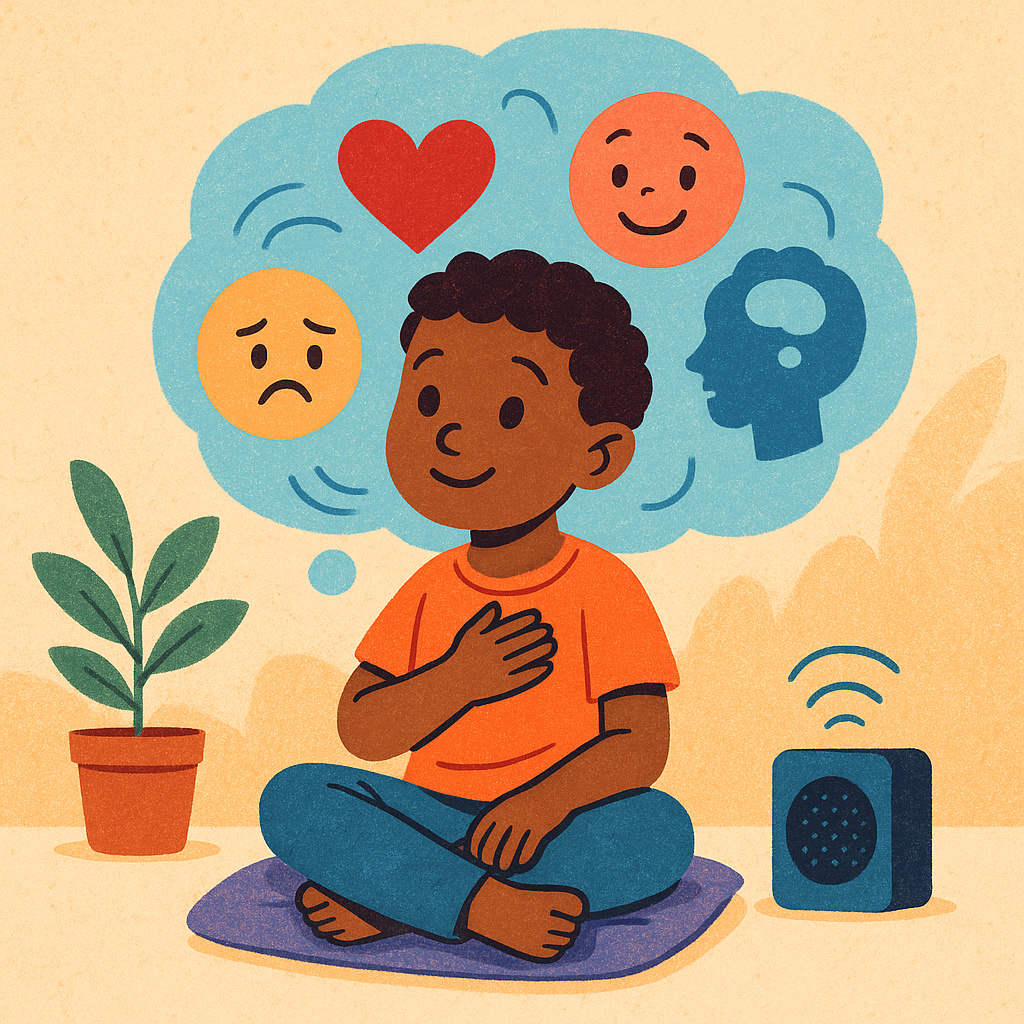Quick Guide: Storytelling helps children understand feelings, perspectives, and consequences — the foundation of emotional intelligence. StoryWeaver deepens this learning through interactive stories that invite empathy and reflection.
1) Why emotional intelligence matters for kids
Emotional Intelligence (EQ) is the ability to recognize, understand, and manage emotions — both your own and others'. Research shows that children with higher EQ have stronger relationships, better academic outcomes, and greater resilience in stress or conflict.
While traditional education focuses on logic and memory, emotional intelligence is built through human stories — by feeling, imagining, and reflecting. That's where storytelling becomes a quiet but powerful teaching tool.
2) How storytelling develops empathy & awareness
When a child listens to or creates a story, they:
- Step into another's world: Understanding a character's motives and feelings teaches perspective-taking.
- Experience consequences safely: Through narrative choices, children learn how actions affect others.
- Build emotional vocabulary: Stories give names to complex emotions like disappointment, courage, or hope.
- Practice regulation: Calm storytelling moments help children slow down and reflect before reacting.
3) The role of interactive stories
Modern storytelling platforms like StoryWeaver take this further through interaction. Instead of passively consuming a plot, children become participants who choose what happens next. Each choice is a safe simulation of empathy and decision-making.
"A friend forgot their lunch. Do you: (1) share yours, (2) ignore them, (3) tell the teacher?"
Each choice leads to a consequence, helping children connect actions to emotions — a vital emotional intelligence skill.
4) How StoryWeaver supports emotional growth
- Guided reflection: Built-in pause moments encourage kids to discuss how a character might feel.
- Safe branching logic: All choices teach empathy and accountability — no violence or shaming.
- Diverse representation: Stories feature global settings, helping kids respect cultural differences.
- Family participation: Parents can co-listen or co-create stories together before bedtime.
5) Simple storytelling activities at home
- Emotion mapping: After a story, ask: "What was the happiest part? The hardest part?"
- Make-your-own ending: Let your child rewrite how the story concludes.
- Switch roles: Retell the same story from another character's view.
- Draw the feeling: Have your child illustrate a moment of courage or kindness.
FAQ
- How does storytelling build empathy?
- Stories let children step into another person's perspective, feel their challenges, and imagine emotional responses — the foundation of empathy.
- Can AI stories help children learn emotional awareness?
- Yes — interactive AI stories can pause for choices and reflection, helping kids recognize how feelings shape decisions and relationships.
- What age is best for emotional learning through stories?
- Ages 5–12 are ideal — when imagination and social understanding are developing rapidly. However, reflective storytelling benefits all ages.
- Is this only for young children?
- No. Older children benefit too — especially those navigating friendships and identity. Reflection-based storytelling can continue into teens.
- How often should we do emotional storytelling?
- Even one reflective story a night builds pattern awareness. The key is consistency and discussion, not duration.
- Can I use this in a classroom setting?
- Yes — many teachers use StoryWeaver during "circle time" or literature classes to practice empathy discussions.
Related reading:
- The New Bedtime Routine: Listening to AI Stories
- How to Use StoryWeaver for Classroom Storytelling
- How AI Is Changing Storytelling for Children
- View StoryWeaver pricing plans
